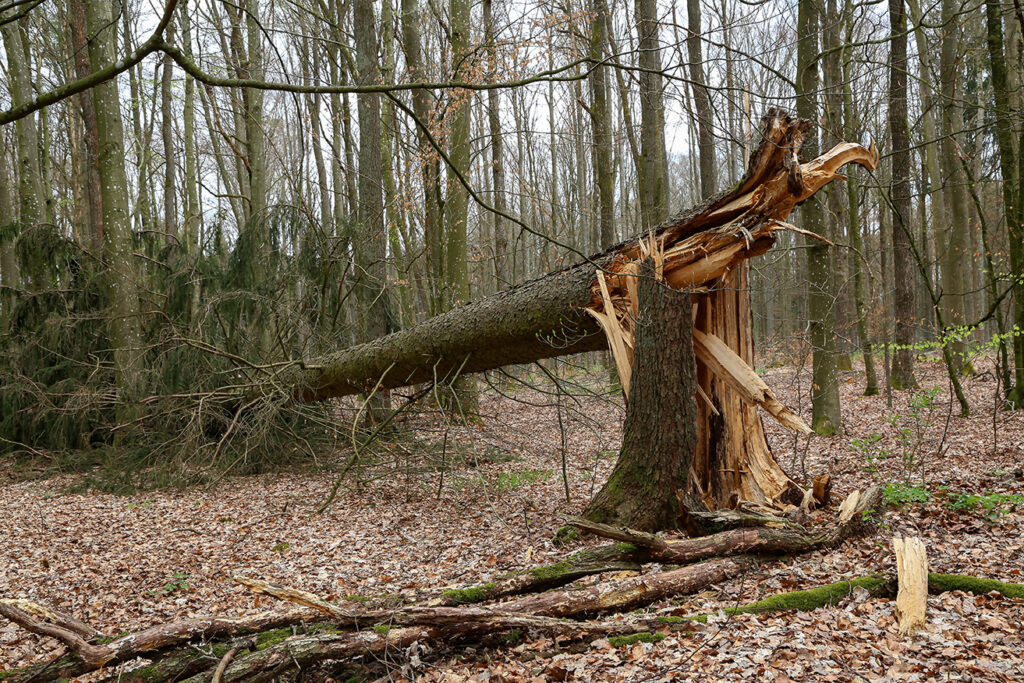
I have taken the top out of a tree that was almost 100 feet tall, been on a job where we removed a tree measuring over twelve feet at the base, and have had my boss throw me out of the way just in time as a broken poplar top came down on a windy day while I was making a face cut on a tree nearby. Do I mention these past experiences just in passing? No, I do not—I mention them because from each one came a lesson, and some of them most likely saved my life sometime during my career.
How can I say that? Well, I think it is simple. When we are young, we may have thought we were invincible, but we did not have a lot of experience. So, where did that experience come from? Well, the first and foremost was from doing the job and learning each day. The next was to listen to those with experience and gain from their knowledge. On a lot of logging jobs, sometimes that is easier said than done. When I first started cutting trees, the last thing my boss wanted to do was teach a young kid like me. He had his hands full each day just trying to keep all his equipment running. What changed his mind was when he noticed that I was truly willing to work no matter the conditions. With the constant questions I asked him every day, he finally relented and spent time showing me the “ropes.” Those tips he gave me years ago still stick with me to this day and I have passed them onto others.
I look at safety this same way, with respect. To some, a hard hat or safety belt may seem bothersome, but consider the alternatives. I have been on several jobs where proper personal protective equipment was required for each employee. On extremely hot days, many viewed the equipment as a nuisance. However, when a dead limb crashes out of a tree and hits your hardhat and breaks it into pieces, everyone realizes the importance of the safety gear. Another example is when getting in and out of the skidder to hook chokers. This is hard enough on its own accord, but connecting and wearing a seatbelt is easily perceived as bothersome. However, if a small section of road collapses and causes the skidder to roll, it could be the difference between death and bruises. Another example is the common practice of riding on the front of a dozer or skidder to get to the cutting area. Suddenly a small tree gets wedged in the tracks or tire chains. The tree hits the unsuspecting rider, and he is thrown to the ground and possibly injured by the fall or the equipment.
None of these examples are fiction. They have all happened and will continue if the culture of safety does not become ingrained with you and your employees and is on the same level as production. What I am getting at is that my boss would tell me what I should do and what I should not. He always used simple and colorful words that were easily comprehended. We must do a better job of communicating past mistakes and practices. We must learn from those who have survived in the industry and the mistakes they have witnessed over the years. This material needs to be documented and made available to all forest workers.
I have visited jobs where the principles of the Timber Safe program have been implemented and jobs where it has been ignored. West Virginia loggers are very independent, but why is safety such an issue? Injuries result in lost productivity, rises in workers’ compensation rates, and many family heartaches. All too often, we are reactionary rather than proactive. Not with all companies, but with many. I have witnessed this not only in our great state, but surrounding states, as well.
I am not trying to place blame, but rather emphasize the importance and values of safety and a safety program. Safety programs can be very simple and cater to your company and the tasks at hand. It’s easy to start small and then allow the program to grow. I have recently visited some oil and gas well sites, and it was amazing to see their attention to safety detail. A logging operation does not have to be as complicated as a large well pad, but can be a much simpler program. Start with monthly safety meetings, CPR and First Aid training for all employees, and proper use of personal protective equipment. Just remember: it could save someone’s life.
There are plenty of people who will work with companies to develop safety plans. I am always available to help or if you would like to be part of our Timber Safe network, please contact us for more details.















